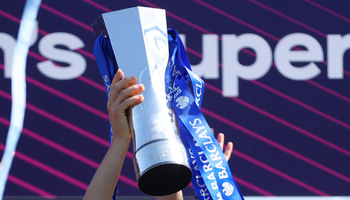While attempts to start a European Super League in football were seen off earlier this year, the curtain has recently come down on an established version in another sport.
The next season of rugby league’s top competition – officially known as “Super League Europe” but more commonly as the Super League – will conclude with its 25th Grand Final.
Ahead of this milestone, we have examined the competition by taking a look back across its history to date.
What is the Super League?
Before we get into the specifics of the competition, it’s worth remembering how we’ve ended up with two distinct codes of rugby in the UK: rugby union and rugby league.
Initially there was just one sport, governed by the Rugby Football Union, but disputes around the payment of players and a perceived bias towards southern clubs caused a group of its northern members to rebel in 1895.
These clubs broke away to form their own governing body, initially called the Northern Rugby Football Union but changing its name to the Rugby Football League in 1922.
This new organisation initially retained the same set of rules but over time the distinct sports of rugby union and rugby league have evolved.
The format of the divisions in rugby league has changed several times since its formation in 1895, but in 1996 the current format was established. The Super League replaced the Rugby Football League First Division at the pinnacle, while the calendar was switched from a traditional winter season to a summer season.
How does the Super League work?
The Super League season sees 12 teams play 25 regular-season matches, receiving two points for a win and one point for a draw. At the conclusion of this schedule, the team that finishes first in the league is awarded the League Leaders’ Shield.
Meanwhile, the bottom team is relegated and replaced with the winners of the RFL Championship for the following season.
Attention then turns to the play-offs, with the top two teams automatically qualifying for the semi-finals. The four teams finishing third to sixth compete in the Eliminators for the other two semi-final places.
The semi-final winners then contest a Grand Final – currently held at Old Trafford in Manchester – to determine the season’s champions.
How hard is it to win the League Leaders’ Shield?
The Super League is one of the more competitive top-level tournaments in the UK, with only one team having ever successfully defended the League Leaders’ Shield.
St Helens – based in Merseyside and one of the original founders who broke away back in 1895 – have topped the Super League table in consecutive seasons on four occasions: three times in a four-year streak from 2005 to 2008 and more recently in 2019.
However, the Super League is getting harder to dominate. In the first 15 years of its existence there were just four different League Leaders’ Shield winners, but in the last 11 there have been twice as many (eight).
While no team that finished lower than seventh the previous year has ever topped the Super League table at the end of a season, the team that finished sixth has done so four times: as many as the previous season’s shield winners.
How hard is it to win the Super League Grand Final?
While it has been difficult to dominate the league itself, the play-offs are another matter. The 24 Grand Finals to date have been won by just four different clubs.
The aforementioned St Helens lead the way with nine titles, having edged past Leeds Rhinos’ tally of eight in 2021 with their third successive Grand Final triumph. Wigan Warriors secured their fifth title in 2018 and Bradford Bulls won their fourth back in 2005.
Those who perform well over the season usually set themselves up well for the play-offs, with 19 out of 24 Grand Finals won by a team that had finished in the top two: 11 shield winners and eight runners-up.
The top two league positions have also provided 19 losing finalists, which means that only 10 of the 48 places in the Grand Final to date have been occupied by a team finishing third or lower in the table that season.
Which clubs have the best Super League pedigree?
The last two seasons have been decided on win percentage, with a draw counting as half a win, so we have applied that formula to each current team’s all-time Super League record.
St Helens unsurprisingly lead the way with a win percentage of 73.5% and are comfortably clear of the next best record: Wigan Warriors’ 68.3%.
At the other end of the scale, Salford Red Devils have a win percentage of just 36.3% over their 593 Super League matches to date. Wakefield Trinity are the only other team languishing below the 40% mark with 38.4%.
Which teams rely the most on home advantage?
Salford’s poor record owes a lot to their away performances: no current Super League team has won a greater share of its points in home matches. The Red Devils have won 0.88 points per game at their own stadium, which is a 67% better return than the 0.53 they have averaged on the road.
Hull Kingston Rovers and Catalans Dragons are the only two other clubs whose home performances have been at least 50% better than their away ones.
Leeds Rhinos are the least affected by travel, with their points per game tally at home less than 20% superior to their away record.
Join bwin today and receive up to £20 money back as a FreeBet if your first wager (3+ selections at odds of 1/2 (1.5) or greater) is a loser! Terms and conditions apply.















